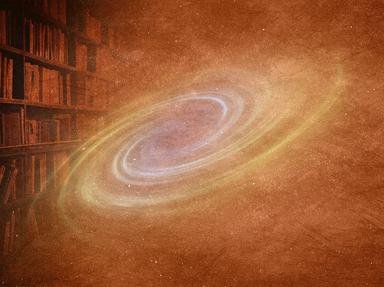Quiz Answer Key and Fun Facts
1. October 14, 1947 - A man proves, officially, that humans can move faster than sound. This speed barrier had typically been thought deadly, impossible, or otherwise prohibitively difficult to pass. Who finally proved that the barrier was not there at all?
2. November 24, 1859 - We go back in time for a controversial publication of a book of scientific theory by Charles Darwin. The theory would prove revolutionary for the field of biology but create many complications from the religious sphere. Which book is this, whose central theory would go on to be so controversial?
3. September 3, 1928 - On this day, Alexander Fleming returns to his office to discover that mold-contaminated bacteria colonies had been killed, possibly by the mold. Over the next ten years or so this led to the development of the first antibiotic. Which antibiotic?
4. July 16, 1945 - The Trinity test took place in the desert of New Mexico, where the first-ever nuclear fission bomb was detonated. Which leader of the Manhattan Project, upon seeing the blast, was reminded of a line of Hindu scripture, "I am become Death, destroyer of worlds"?
5. April 14, 2003 - The human genome is fully mapped! What exactly was sequenced and mapped, here?
6. November 8, 1895 - The electromagnetic waves known as X-rays were first observed on this date, leading to their discoverer getting the first ever Physics Nobel Prize award. Who was this scientist?
7. May 24, 1844 - The first telegraph line from the Capitol in Washington, DC to Baltimore, Maryland was demonstrated, with the inventor of the line sending the message "What hath God wrought". Who, a co-inventor of a code that bears his name, sent this message?
8. December 3, 1967 - Dr. Christiaan Barnard performs the first ever of which type of surgery, one that now saves thousands of people every year?
9. October 4, 1957 - On this day, the first ever man-made satellite was launched into space, triggering an era of space exploration and travel. What was the name of this satellite, both a Cold-War salvo and a massive scientific step forward?
10. April 12, 1955 - Dr. Jonas Salk announced to the world on this date that a vaccine now existed to prevent which disease, a childhood scourge that killed and disabled many, even affecting president Franklin Delano Roosevelt of the United States?
Source: Author
merylfederman
This quiz was reviewed by FunTrivia editor
WesleyCrusher before going online.
Any errors found in FunTrivia content are routinely corrected through our feedback system.

